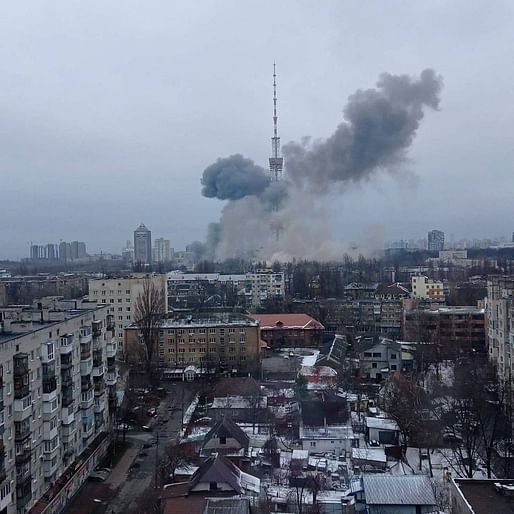
Eight months after Ukrainian forces retook the Kyiv suburb of Irpin from Russian occupiers, The New York Times has spoken with several architectural figures from the region on their mission to rebuild the urban landscape destroyed by war.
Since Russia’s invasion in February 2022, 885 buildings in Irpin have been destroyed, while 12,000 have been damaged. 119 high-rise apartment buildings have sustained significant damage, as have 1,483 private homes, resulting in 16,358 residents being left homeless. City officials estimate the cost of completely rebuilding Irpin to be over $1 billion.

Among those interviewed by The New York Times was Mikhail Sapon, an architect who is in charge of overseeing the city’s reconstruction in collaboration with the Irpin mayor’s office. “During this month, we started counting all the damage, scanning everything with drones,” said Sapon, who was himself shot at the beginning of the invasion. “We realized that 70 percent was destroyed, that the bridges were gone, all the kindergartens are damaged.”
To aid in the city’s rebuilding, Sapon is one of several leaders who oversaw an open call for Ukrainian architects, designers, and urban planners to offer ideas; a call which was eventually opened to international architects. The attention of international architects on Ukraine, including a manifesto for Kharkiv published in April by Norman Foster, is a double-edged sword, according to Kharkiv School of Architecture deputy vice chancellor Iryna Matsevko.
While the attention of high-profile architects can attract international investment and capital, Matsevko’s study of the reconstruction of the Balkans after the 1990s Bosnian War makes her wary of the danger of leaning too heavily on foreign entities. In the case of the Balkans, foreign governments and organizations embarked on rebuilding plans and strategies without sufficient attention to local contexts, resulting in an uneven regeneration of cities such as Sarajevo. “Already, we are seeing how international institutions are coming to Ukraine and pursuing the same strategies that will lead to failure,” Matsevko told The New York Times.

Among the sites within Irpin in need of rebuilding is the city’s 19th-century open-air market, which was largely destroyed during the Russian invasion. The competition for the market’s rebuilding, overseen by Sapon, has attracted ideas from three architecture firms. Among those is Project Seven, a Kyiv-based practice led by architect Yevheniia Wasilovska.
“Everyone has their own idea of freedom, and in this space, people can practice freedom however they like,” Wasilovska told The New York Times. Elements within Project Seven’s vision for the market include an outdoor amphitheater, a minimalist fountain, and a broad elevated walkway sheltering a commercial area.
The one billion dollars estimated to rebuild Irpin is among the $127 billion needed to rebuild Ukraine’s buildings and infrastructure, as we reported earlier this month. Back in June, meanwhile, UNESCO released a report which documented the significant damage inflicted on 139 historic sites, monuments, and structures since the beginning of the Russian invasion, which include 62 religious sites, 12 museums, 26 historic buildings, 17 cultural buildings, 15 monuments, and 7 libraries.
No Comments
Block this user
Are you sure you want to block this user and hide all related comments throughout the site?
Archinect
This is your first comment on Archinect. Your comment will be visible once approved.